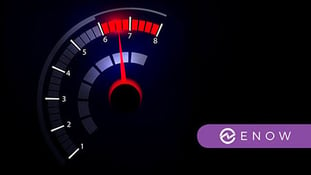Outlook: Limits and Performance
When it comes to collaboration, Outlook is still the most in common tool. It’s not only an e-mail...

Microsoft has about 258 million paid seats for Office 365, The Verge reported in April 2020. As a “shared medium” for a lot of organizations around the globe, it should be clear that there must be limits in the Microsoft 365 ecosystem, e. g. message size limits or Teams member limits. In this blog we'll cover recipient limits in Exchange Online.
Exchange Online Protection (EOP) is the cloud-based filtering services which protect your organization from malicious messages. Besides filtering, EOP is the first hop within Exchange Online when it comes to email messages. In other words, it acts like an smtp gateway.
Although there are special limits for different subscription models (like the maximum mailbox size depends on the license used), the recipient limits within EOP are the same. We distinguish between two different limits:
Like in the Exchange on-premises version, since 1997 have been able to configure the recipient limit on a per-user basis to avoid potential spam messages, rogue employees, or hacked email accounts. Exchange Online Protection already includes default limits which are mentioned in the last section above, but email admins can use custom limits to improve the security posture of their organization as well.
These limits can be configured in four different ways:
In August 2020, Microsoft introduced the capability to modify a tenant-wide recipient limit with Remote PowerShell. The property MaxRecipientEnvelopeLimit on the TransportConfig objects can be used to configure the tenant-wide recipient limit:
The value “Unlimited” under the transport config means it falls back to the maximum recipient limit EOP offers by default (a maximum of 1,000 recipients as mentioned above). As like in Exchange on-premises, the tenant-level value is used if the mailbox setting is “Unlimited”. If the mailbox setting is a numeric value, it is authoritative.
Example:
| Mailbox Setting | TransportConfig Setting | Behavior |
| Set-Mailbox Dominik.Hoefling -RecipientLimits 50 | Set-TransportConfig -MaxRecipientEnvelopeLimit 1000 | Dominik.Hoefling can send to a maximum of 50 recipients per message |
| Set-Mailbox Dominik.Hoefling -RecipientLimits Unlimited | Set-TransportConfig -MaxRecipientEnvelopeLimit 10 | Dominik.Hoefling can send to a maximum of 10 recipients per message |
Summary
Controlling the number of recipients per message – different from the default value – makes sense for specific users or applications. Many email admins use this setting to prevent sending spam or bulk email from their organizations’ environment. Microsoft offers admins a tenant-wide setting for more control as it was introduced in Exchange on-premises.
ENow's Office 365 solution has a wide variety of built in Office 365 reports ranging from: traffic, storage & usage, client access, app specific reports (Teams, OneDrive, etc), license adoption, license management, and more! These reports can easily be customized to meet your organizations needs.
Given the breadth of Office 365 and each organizations unique reporting needs, we realize it would be nearly impossible to make every report imaginable out of the box. With that said, we have built in PowerShell component with the ability to store your own reports directly to the console.
Learn more
Dominik is a Microsoft MVP primarily specializing in Microsoft Exchange, Exchange Online and Office 365. Dominik currently works for a German consulting company, AtWork. At atwork, Dominik focuses on designing and building message infrastructures and cloud technologies. Dominik has worked in IT since 2004, primarily with Exchange Server but also has experience with Windows Server, Active Directory, Azure, Office 365, Unified Messaging and various third party products.


When it comes to collaboration, Outlook is still the most in common tool. It’s not only an e-mail...


I expect we all know there are limits to what you can and cannot do with your Exchange Online...